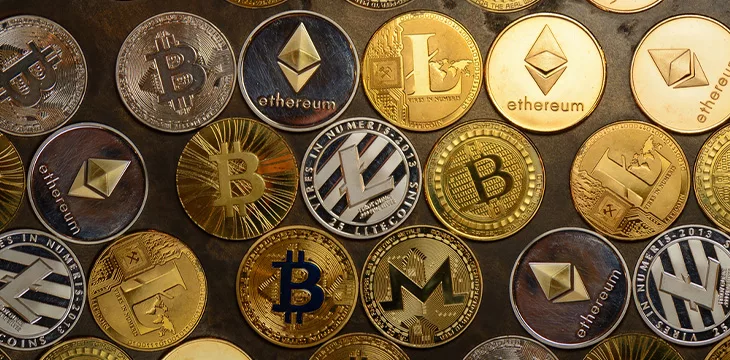|
Getting your Trinity Audio player ready...
|
This post originally appeared on ZeMing M. Gao’s website, and we republished with permission from the author. Read the full piece here.
The crypto exchanges convert a crypto asset into unregistered security offerings even if the asset is not such a security already.
This is due to primarily the following reasons:
(1) the completely centralized nature of these crypto exchanges;
(2) the predominantly off-chain transaction environment created by the crypto exchanges.
Most crypto assets are already securities due to the way they were created, issued, and mined. See Even BTC has become a security.
But even if a crypto is not already a security, a subsequent offering of the crypto on exchanges invokes a secondary offering which may constitute a security offering, in which the offeror is the exchange, and the offeree is the traders on the exchange.
Most crypto assets have a subsequent secondary offering on an exchange. It is my view that all crypto exchanges that are centrally operated in a predominantly off-chain environment are really making securities offerings when they facilitate crypto trading. This act of offering converts the asset being offered into a security even if the asset is not security already.
For example, even if a crypto exchange is offering tokenized gold (which, when properly tokenized on-chain, can be a nonsecurity), the particular manner of the offering would make it a security offering, thus converting the tokenized gold into a security when traded on such an exchange.
On this point, the world has been misled into believing that what these crypto exchanges do is simply offering a trade platform to facilitate trades between a buyer and a seller.
Absolutely not. What these centralized exchanges do is essentially the following:
Take trading BTC as an example. The exchange creates account-based virtual tokens of BTC (a token of a token, so to speak) but does not present them as tokens but rather as BTC itself (that’s a part of the deception). These account-based virtual tokens are pegged on the real BTC held in a pooled wallet owned by the exchange. When a buyer buys bitcoin from a seller on the exchange, the buyer is really buying a virtual token of BTC, not the on-chain BTC itself. The virtual token is just a numerical representation on a virtual user account on the exchange. Such a virtual account has a counterparty which is the exchange, and provides legal rights that are very different from the direct ownership of the on-chain BTC.
Only when the holder of the virtual token leaves the exchange platform will the holder actually receive the real BTC.
This is akin to a banking system, only it is not regulated and therefore lacks protection, including regulatory supervision, disclosure requirement, etc. The fact that very few crypto exchange customers are even aware of their virtual account status is only a natural result of such unregulated conditions.
The exchanges all bank on a bet that a vast majority of transactions will be in-platform trading (which is really only trading the exchange’s account-based representation tokens) rather than on-chain activities, which only happen when a customer deposits or withdraws from the platform.
In normal conditions, the above-betted condition is overwhelmingly true. The reason why this has been sustained is ironic because these crypto exchanges take advantage of the following two conjugating factors simultaneously:
(1) that the underlying blockchains of the crypto assets are not scalable and have high costs for on-chain transactions. In other words, crypto exchanges thrive because of, not in spite of, the inadequacies of the blockchains that have produced the crypto assets in the first place.
(2) most exchange users don’t understand that everything that happens on a crypto exchange happens in an extremely centralized and unsupervised environment which is the antithesis of the ‘cryptoness,’ which they have been misled to believe. In other words, crypto exchanges thrive because of, not in spite of, crypto mass’ lack of understanding of economics and lack of actual participation in the real economy.
The trading is offered in various asset pairs, but everything is account-linked through the virtual accounts created on the exchange. Even when a trading pair involves a fiat such as the U.S. dollar, the real transactions happen predominantly between synchronized virtual accounts with very little involvement of the real money. For that, the creation of a stablecoin such as USDT provides the otherwise nonexistent liquidity, sustaining the artificial environment at a much greater scale.
But why is this a problem?
The exchanges charge fees for transactions. So far, it still sounds like an offer of a service, not a security.
But from there, the deeper deception begins: the exchanges primarily charge fees in either the coin being traded (BTC, for example) or a special coin created by the exchange itself out of thin air to facilitate the payment of fees (BNB, for Binance, for example).
As a result, the exchange’s revenue depends on the prices of the coins and tokens, for example, BTC and BNB.
Doing this, the exchange’s entire business model is to promote the price of the traded coins (e.g., BTC) and the exchange’s special coin (e.g., BNB). They don’t even need to be greedy to do this because it is a necessity created by the very design of the business.
It is a self-referencing circular economy that doesn’t create any economic value but is only financed by the external fiat money drawn into the exchanges. In other words, these offerings are really a way to raise capital, which is then used to create more offerings to raise more capital, and so on.
When such financing activities are placed in the light of the securities laws, measured by the Howey test standards, It is hard to see how these exchanges can claim that they haven’t made illegal securities offerings by doing the above, even if they have done it without committing fraud such as trading manipulations, which of course they regularly do but is another story. See the cancerous crypto.
Come to think of it, it explains why Satoshi objected to the crypto exchanges in their current form in the beginning but spent much of his earliest effort after the release of bitcoin on a different kind of exchange for bitcoin. He clearly understood these issues from the very beginning, not by accident, because the polymath also studied law and was the mastermind behind the network security of the Australia stock exchange. But unfortunately, the world went in a different direction to arrive at the current reality, which is scam infested.
The problem goes beyond the securities laws. The nature of the business makes these exchanges giant bloodsucking parasites to the real economy.
This is not to say that all projects behind the crypto assets traded on exchanges are also bloodsucking parasites. That is a different matter. There are many projects based on good ideas trying to solve real problems. But they need to prove their usefulness by actually providing utility rather than pointing to the price on crypto exchanges, which proves nothing under such abnormal Ponzi conditions created by the crypto exchanges.
For more about the corrupt crypto exchanges, see the cancerous crypto.
Watch: Crypto regulation will make life easier for BSV

 01-07-2026
01-07-2026 




